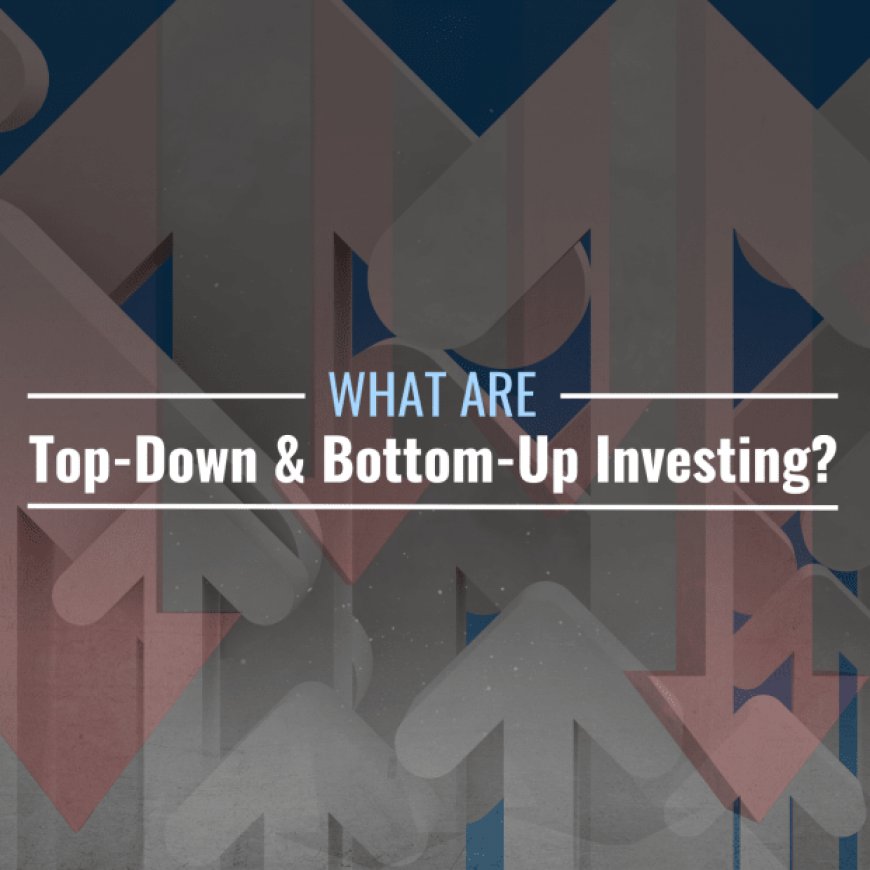What Are Top-Down & Bottom-Up Investing? Definition & Examples
What Is Top-Down Investing? Top-down investing refers to an investment strategy that takes a big-picture view of the economy and how it affects individual companies. Fund managers, investors, and analysts look at various macroeconomic factors such as monetary policy, inflation, employment, and ...


What Is Top-Down Investing?
Top-down investing refers to an investment strategy that takes a big-picture view of the economy and how it affects individual companies. Fund managers, investors, and analysts look at various macroeconomic factors such as monetary policy, inflation, employment, and financial markets, and how these could affect industries and specific companies within them. This top-down approach allows investors to identify large-scale economic and social trends and then cherry pick companies that stand to benefit because of them.
A top-down investor could monitor key economic indicators such as industrial production and capacity utilization, retail sales, auto sales, and new home sales as well as economic outlook reports issued by the World Bank. Aside from macroeconomic factors, social and political factors can also be taken under consideration.
For example, if the Federal Reserve were to tighten monetary policy by raising interest rates, top-down investors would want to focus on which types of companies would stand to benefit or lose from this sort of economic environment. Banks might start to lose customers, and lending might be tough to come by as borrowing costs increase. In another example, a government policy to expand the use of solar energy might push investors to focus on which companies would benefit from this initiative, such as solar panel makers and battery-storage manufacturers.
What Is Bottom-Up Investing?
Bottom-up investing is the inverse of top-down investing in that it starts at the individual company level, then moves upward. Bottom-up investing refers to researching the fundamentals of how an individual company will perform or has performed.
An investor could look at a company’s income statement and balance sheet to review historical data such as revenue, net income, assets, and liabilities, and analyze whether sales or profit are likely to increase in the future. Some measures and metrics to monitor include earnings estimates, profit margin, and debt-to-equity ratio.
For example, if demand for a medical-equipment maker’s device for detecting blood sugar levels is increasing due to its popularity and ease of use, a bottom-up analyst could evaluate how much the company’s sales are likely to grow in future quarters, how much profit might be generated, and what its market valuation could be.
Top-Down vs. Bottom-Up Investing: How Do They Differ?
The top-down and bottom-up approaches to investing are essentially opposites. While one investor may be looking at a forest, another might be looking at the trees in the forest, so to speak. While investors may be looking at the energy sector, for example, they may miss opportunities in evaluating individual companies. The same goes with bottom-up investing—while investors are analyzing the future performance and potential profitability of a company, they may be ignoring the long-term outlook of the economy or geopolitical factors.
Are There Funds That Focus on Top-Down Investing?
Thematic funds are often good examples of the top-down approach to investing. Thematic investing is a method of investment that looks at trends that are expected to play out over the long term.
Investors can also look at specific exchange-traded funds or mutual funds that focus on a particular sector or industry. For example, in a declining interest rate environment, investors may look at property developers on the view that lower borrowing costs will encourage consumers to buy homes.
What's Your Reaction?



























































